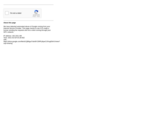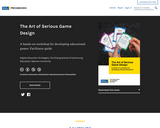
This is a handout I have used to help faculty identify and use Open Educational Resources.
- Subject:
- Education
- Material Type:
- Diagram/Illustration
- Author:
- David O. Smith
- Date Added:
- 02/02/2021


This is a handout I have used to help faculty identify and use Open Educational Resources.

VCCS's "Pathways" Course provides faculty with an introduction to the laws that influence the use, re-use, and distribution of content they may want to use in a course. Activities include finding openly licensed content for use in a class and publishing openly licensed works created by faculty. At the end of the course, students will have openly licensed content that will be ready for use in a course.

As faculty, you assess textbooks against a set of criteria that reflects your long experience and knowledge of student needs. You do the same with Open Textbooks, but there are a few additional considerations.

The materials within this guide are intended to support multidisciplinary teams in or during the pre-production phase of serious game design as they collaborate in a facilitated workshop. It is critical that the workshop facilitators are familiar with the conceptual framework and proposed methodology in order to better support participants as they collaborate in the game design brainstorming and protoyping steps.

This guide is for faculty authors, librarians, project managers and others who are involved in the production of open textbooks in higher education and K-12. Content includes a checklist for getting started, publishing program case studies, textbook organization and elements, writing resources and an overview of useful tools.

Its purpose is to provide readers with a quick and user-friendly introduction to Open Educational Resources (OER) and some of the key issues to think about when exploring how to use OER most effectively. The second section is a more comprehensive analysis of these issues, presented in the form of a traditional research paper. For those who have a deeper interest in OER, this section will assist with making the case for OER more substantively. The third section is a set of appendices, containing more detailed information about specific areas of relevance to OER. These are aimed at people who are looking for substantive information regarding a specific area of interest. Originally published 2011; Revised 2015.

Join us for this webinar to hear how colleges are transitioning from individual faculty OER course adoptions to entire departments and OER degree pathways. OER leaders at colleges who have reached critical mass in their implementation will share best practices for sustaining faculty engagement, student involvement, project funding, and institutional commitment to OER adoption for the enhancement of teaching and learning.
Our featured speakers are both longtime community college leaders in the OER movement at regional and district levels. They will engage each other in discussions on the themes mentioned above and invite questions from webinar attendees.

This video was made possible by a grant from Achieving the Dream. Through this grant Bay College will create degree pathways using Open Educational Resources. Open Educational Resources are resources licensed with a Creative Commons license type.

Faculty who are new to OER may experience difficulty finding an open textbook or other openly licensed materials to adopt for their courses. Searching on your own is time consuming and the choices can be overwhelming. We will hear from a college librarian who helps faculty find and adopt high quality OER to match their course outcomes and the creators of the award winning OER Commons, a freely accessible online library that allows teachers and others to search and discover open educational resources (OER) and other freely available instructional materials.

What’s all the BUZZ ABOUT Creative Commons, is an introduction and overview of the origins and uses of Creative Commons Licensing and Open Education Resources. This presentation thematically is centered around photographic and audio works of Bees resourced from the Commons.
The comparative choice of Bees is intended to liken the role which Creative Commons serves in today's contemporary legal and digital online ecosystems to the role which Bees serve in the natural world as pollinators.
This PPT Presentation presents
Introduction to Creative Commons
The Legal Foundations of Creative Commons Licensing
Identifying & Defining CC Licenses
Defining, Creating and Sharing OER-Open Educational Resources

Description provided by COERLL:
COERLL hosted an online “OER hangout” on September 25th on the subject of creating open educational resources (OER) with students. With 26 people attending, five language instructors shared their experiences of working with their students to create openly licensed resources for teaching and learning:
Amber Hoye and Kelly Arispe lead the Boise State University Department of World Languages’ Pathways OER Language Teaching Repository of openly licensed proficiency based activities, created by students and teachers.
Kathryn Murphy-Judy, Ngoc-My Guidarelli, and Laura Middlebrooks are part of a team of faculty at Virginia Commonwealth University who have developed an open, connected platform for students to share authentic resources.
At Boise State, upper-level undergraduate students, with the mentorship of staff and faculty, create activities to be used in the weekly language lab component of introductory language courses. These activities can also be used in the classroom and K-12 teachers in Idaho have been involved in creating and teaching with them. At Virginia Commonwealth University, undergraduate students in the 202 class, who are either majors on their way to upper level courses or students finishing their language requirement, curate authentic resources and discuss them with native speakers. Then, upper level students turn those curations into instructional modules, which are being integrated into online open textbooks.
You can learn more about the logistics of these projects by viewing the webinar video, reading about the projects, and perusing the materials. Here, we’ll mention a few of the important themes that came up during the discussion.
One important element of students being involved in materials creation is that they understand what other students will be interested in and can choose topics and texts they know their peers will enjoy. Involving students ensures that a more diverse array of voices and perspectives are represented in the materials, and gives students more of a choice in their own education. Students also gain skills beyond language and culture when they work on these projects: digital citizenship, open license knowledge, technical skills, an understanding of language proficiency, and knowledge of state and national standards.
Each of these projects has a broad community of people with various skills who can support each other and contribute in different ways. At Boise State, the language resource center director, language students and students from other departments, faculty mentors, SLA & CALL researchers, K-12 teachers, state partners, and librarians have all contributed to the OER. At VCU, students, faculty, and librarians contribute to the materials and partnerships are developing with K-12 teachers who use the materials in their courses.
Each of these projects follows an iterative process of development. The work doesn’t start and finish in the span of a semester, it grows and changes. Students develop materials, native speakers proofread them, teachers teach with them, and the team refines them. The Pathways Project carries a disclaimer that “The activities on the Pathways Project OER Repository were created by upper-division students at Boise State University and serve as a foundation that our community of practice can build upon and refine. While they are polished, we welcome and encourage collaboration from language instructors to help modify grammar, syntax, and content where needed.” The cycle of the projects is such that lower-level students can get involved in the project as learners, but go on to take a more active role in the project as they progress.
The panelists recommend to anyone interested in creating OER with their students that they start small, and reach out to available communities (institution-wide, or online professional networks) for support and sharing. On that note, COERLL’s next OER hangout is on the topic of joining a teacher community. Join us on November 13th!
View the webinar video, links to the repositories, slides from the presenters, and more on the event page of COERLL’s website.

This a BRIEF overview of Creative Commons licensing for my colleagues (administrators, faculty, and staff) at Central Alabama Community College. This learning opportunity was funded by a grant from ACHE & ACCS, and due to current policy regarding copyright, the College will have to authorize permission to use, edit, &/or redistribute. It is hoped that these policies are being re-visited for the betterment of OER creation and use in Alabama.

Use this checklist to make sure that all the requirements for open licensing are met. Please note that it is very helpful to review this checklist BEFORE you begin development work so that you are designing your resource with open licensing requirements in mind from the beginning.

Open educational resources (OER) play an increasingly important role in the era of open education.This module addresses the questions around how to integrate OER into a school library collection. Specifically, it looks at:What are the considerations, such as quality, accessibility, and curation that might make them more challenging to manage than traditional library resources?How do you begin to work with classroom teachers to introduce and integrate OER into their arsenal of classroom resources?How do you link selection of OER to your school's curriculum?What role does OER play in the larger concept of open pedagogy?A final look at OER and collection development as a social justice issue

Performance Objectives: Understand the basics of copyright and fair use in relation to open educationImplement the Creative Commons Licenses Copyright. We know what it is. And that it is complicated. The digital world has drastically changed how we access, use and interact with copyrighted content.

This step-by-step guide will provide you with information about open licensing and walk you through all the steps needed to apply an open license on your work.

This resource offers a different perspective on copyright and its relationship with Creative Commons Licenses.

Originally designed by Alexander
Schnücker für Arbeitsstelle Hochschuldidaktik der Universität Siegen, these postcard-sized resources have been translated into English, and contextualised for Australia.
The cards are broken into Theory, Practice, Examples, and Resources, and introduce OER to new practitioners whilst also providing examples and tools for anyone to use.
This resource is used to raise staff awareness, to act as a 'ready reference' for practitioners, and as an aid for OER workshops designed to engage staff with OER in their discipline.
Please note that this record contains the final version of the cards, and a .zip package with editable files to make it easier for remix.
Authors: Tamara Heck, Adrian Stagg, Neil Martin, Catherine Wattiaux
CC Licence Information
This work, Creating OER, is a derivative of Making OER by Alexander Schnücker für Arbeitsstelle Hochschuldidaktik der Universität Siegen [University of Siegen, Germany], used under Creative Commons Attribution-ShareAlike 4.0.
Creating OER is licensed under Creative Commons Attribution-
ShareAlike 4.0 International License by University of Southern
Queensland, Toowoomba, Australia.
https://creativecommons.org/licenses/by-sa/4.0/

This video is intended to help you choose compatible resources and choose a valid license for your work. Suppose you are developing an open educational resource (OER), and you want to use some other OER within yours. If you create a derivative work by adapting or combining works offered under Creative Common licenses, you must not only follow the terms of each of the licenses involved, but also choose a license for your work that is compatible with the other licenses

Rachel Fleming, Ashley Sergiadis, and Rachel Caldwell discuss several ways that academic libraries can help OER adopters and authors improve the impact of their work, make materials more accessible, and ensure continued access.
This presentation was presented as a part of Tennessee Open Education Week 2022.